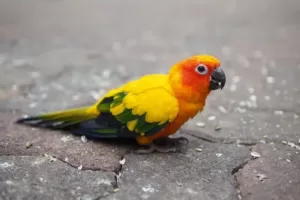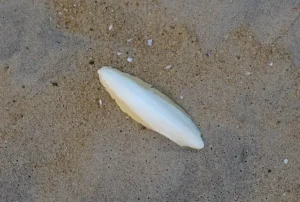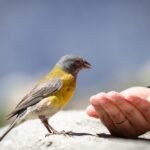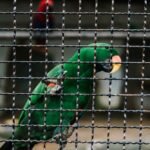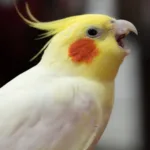When you allow your parrot on a flat surface, it will hop, jump, roll, and run around. Walking in the normal way is just too boring for them.
If you see your parrot walking backward, you might not think much of it as they do all kinds of strange behaviors all the time. However, if it happens on more than one occasion it can be quite concerning.
Walking backward can be a behavioral quirk or a sign of an underlying issue. Usually, if a parrot walks backward it could be bored, stressed, or just being playful. Sometimes, walking backward can also indicate cognitive disorders due to old age or certain illnesses.
Quick Navigation
Why Is My Parrot Walking Backwards?
Parrots engage in quirky behavior all the time. As parrot owners, we see weird behavior that we may have never seen happen before almost regularly. If your parrot seems happy doing it, you shouldn’t necessarily be concerned about it. However, to understand what’s going on, taking a look at the body language can help. Let’s understand some of the reasons you might see your parrot walking backward:
Playful Behavior
It is not always a bad thing if your parrot is acting a bit strange. Parrots routinely engage in strange behavior, some of them, you might have never seen before. So they might surprise you with some quirky behaviors from time to time
Walking backward can be a playful way for them to stimulate themselves and also maybe get your attention. However, if your parrot appears healthy with plenty of energy in its playtime, there’s usually no need to worry. These occasional odd behaviors are often a sign of an active and happy parrot.
Boredom
Boredom is a major problem in companion parrots, especially the ones that do not get enough interaction and attention from their owners. Boredom can manifest in various forms. A bored parrot may usually misbehave or engage in stereotypical behaviors like walking backward. Walking backward can your parrot’s way keep itself stimulated.
Stress
Stress in parrots is often triggered by boredom. When a parrot is unable to get adequate social interaction from its owner and does not have a mate to play with, it can feel confined and anxious.
This often leads to a range of abnormal behaviors, including walking backward. It is indicative of a decline in mental well-being for your parrot. It also means that the parrot has been under stress for quite a while now.
Walking backward is a manifestation of their inner turmoil as they are seeking new ways to cope with the stressful environment. But it does not stop there. If such stress persists over time, the parrot may resort to other stereotypical behaviors like pacing back and forth, feather plucking, or excessive vocalization.
Fear
If your parrot starts walking backward after being startled, it could just be a stress response. It may just be backing up for its safety without taking its eyes off the potential threat.
At the moment, your parrot may be confused and may show other signs of fear like wing flapping and vocalizing loudly. This is often temporary, and you shouldn’t see this behavior happen again. So, while it might seem unusual, this backward movement helps them stay on guard in unexpected situations.
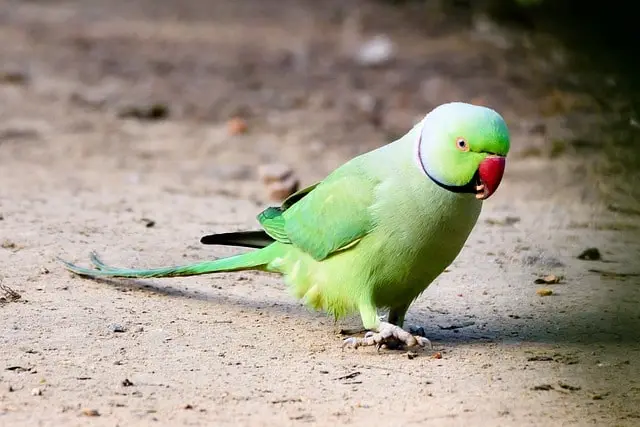
Ataxia
Ataxia is a neurological disorder characterized by poor muscle and uncoordinated movements. Parrots with ataxia may lose balance, stumble, and fall. It may also make it hard for them to walk properly. Their walk may be wobbly and unusual.
Ataxia is a degenerative condition of the nervous system that is caused by damage to a specific part of the brain. According to the National Animal Disease Information Service ataxia can lead to uncoordinated movement in birds.
Symptoms of ataxia in parrots:
- Lethargy
- Inability to Perch
- Falling off their perch
- Splayed legs in order to maintain balance
Cognitive Decline
Neurological issues are more common with older parrots. If your parrot is in its golden years, it is important to care for its physical health. Parrots at this age are susceptible to all kinds of health conditions.
Cognitive impairment can make your parrot behave in strange ways, including walking backward. Your parrot walk may also sometimes appear more wobbly. You should have your parrot checked out by a vet if its walking seems impaired, as arthritis is also quite common in older parrots.
Heavy Metal Toxicity
Parrots are susceptible to ingesting heavy metals, through their habit of nibbling on things around them. Heavy metals like lead, zinc, and copper can be toxic to parrots. They can accumulate in their bodies over time, leading to many health issues, including neurological disorders, and organ damage.
It can make your parrot act weird as the condition gets worse. If you suspect your parrot has been exposed to heavy metals, visiting a vet is necessary. Heavy metals do not get expelled and remain in their system for a long time.
When Should You See A Vet?
Occasional instances of your parrot walking backward are generally nothing to worry about. Parrots like to play and entertain themselves every now and then. So if your parrot appears healthy and active take it as a positive sign.
However, playful behaviors are not Constant. If you notice your parrot frequently walking backward or engaging in other stereotypical behaviors like pacing, it’s better to consult a veterinarian.
These signs collectively indicate a parrot’s deteriorating mental health. A vet can perform a thorough examination to determine if there are any underlying health issues or stressors that may be causing these behaviors.
